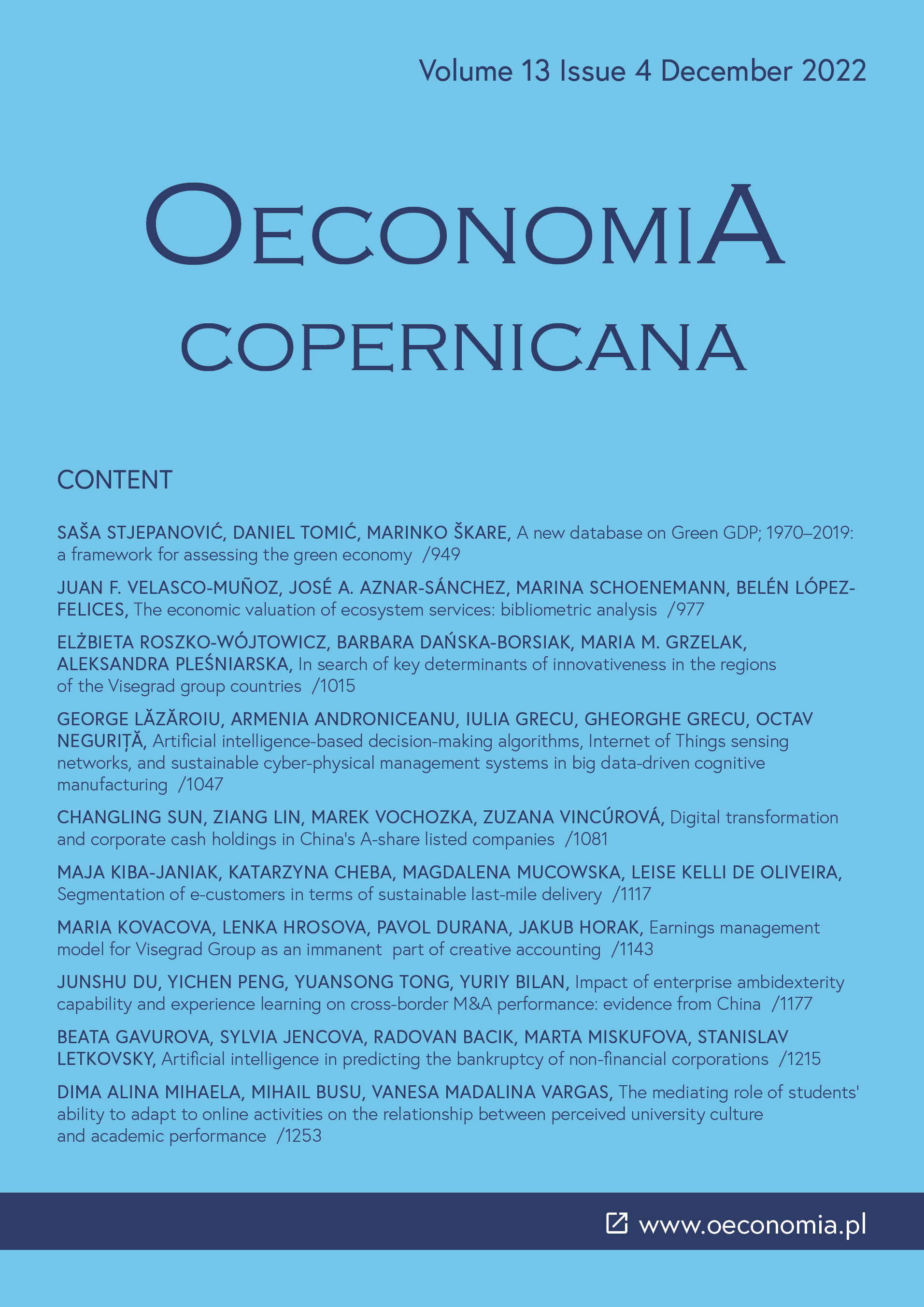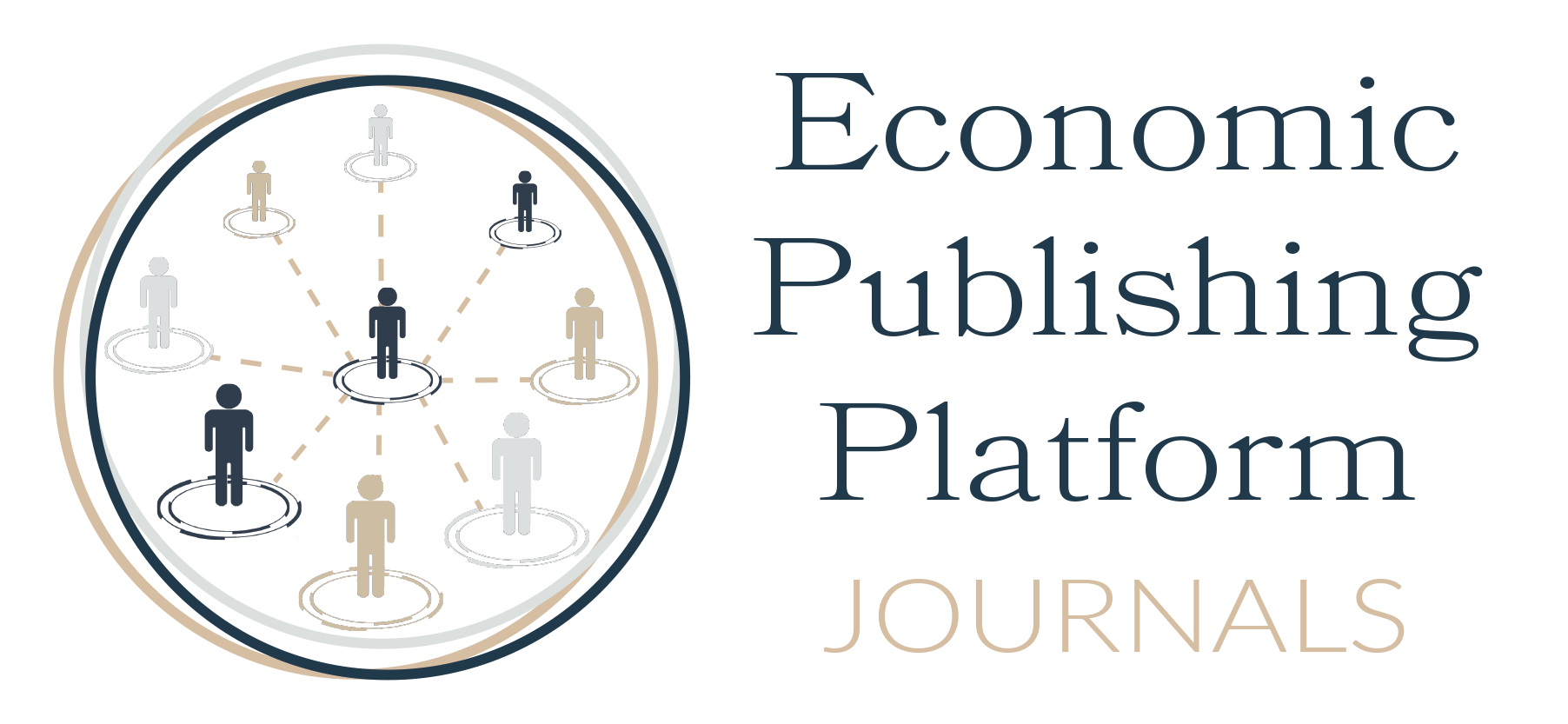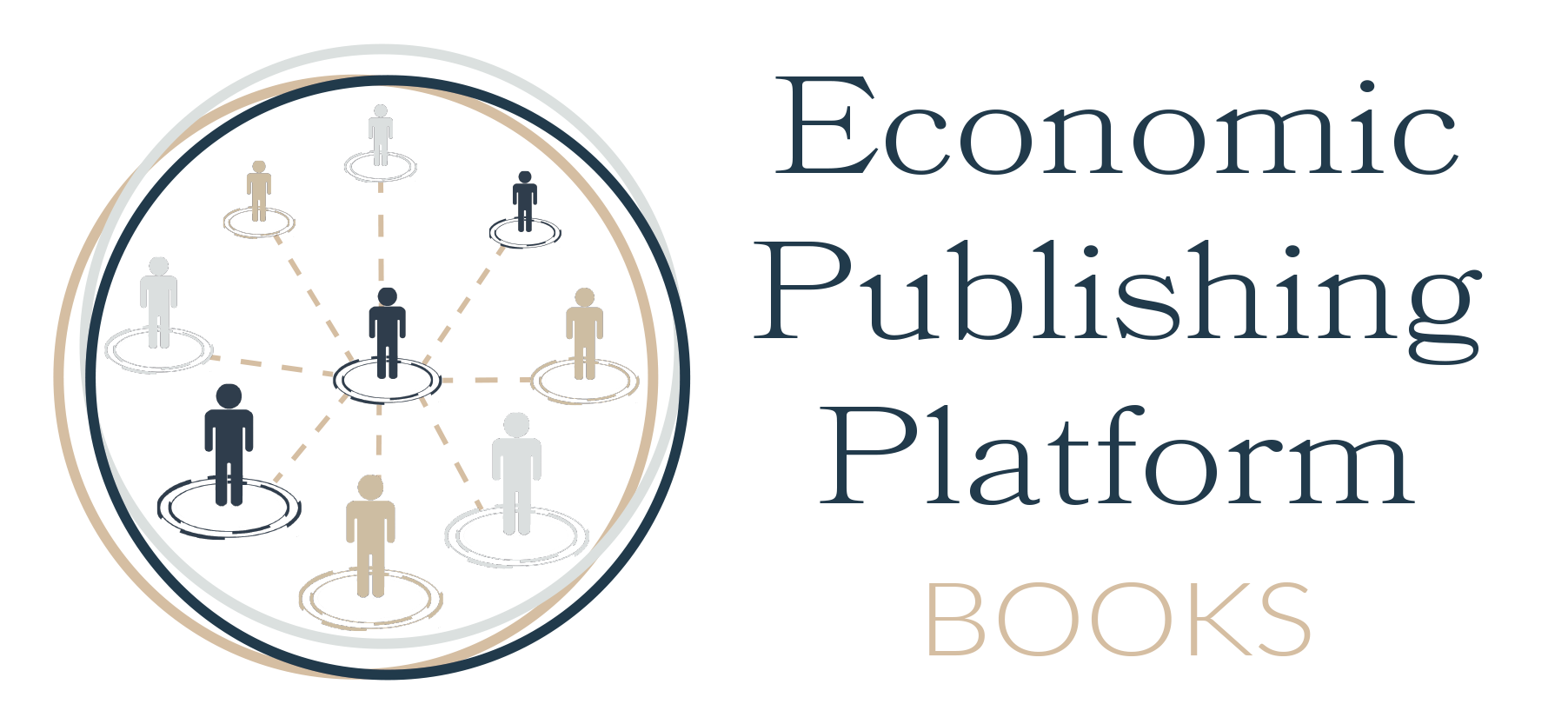Segmentation of e-customers in terms of sustainable last-mile delivery
DOI:
https://doi.org/10.24136/oc.2022.032Keywords:
e-commerce, conjoint analysis, sustainability, sustainable logistics, ecological awarenessAbstract
Research background: A rapidly developing e-commerce market and growing customer expectations regarding the speed and frequency of deliveries have made the last mile of the supply chain more challenging. The expectations of e-customers increase every year. They choose those companies that deliver goods faster and cheaper than others. A significant group of customers in Poland still selects home delivery. Many of them frequently return products to the retailer. These expectations and behaviour pose a challenge for the transport companies to deliver parcels to individual customers soon after the purchase, sometimes even on the same day. In addition, increasingly frequent deliveries contribute to environmental pollution, congestion, and accidents, as well as more expensive deliveries.
Purpose of the article: The paper aims to identify e-customers? preferences and assess their impact on sustainable last-mile delivery (LMD) in the e-commerce market. The authors have also identified factors influencing e-customers? behaviour to make last-mile delivery more sustainable.
Methods: The conjoint analysis was applied to evaluate a set of profiles defined by selected attributes in order to investigate the overall preferences for the profiles created by the respondents to the survey.
Findings & value added: The segmentation of e-customers according to their preferences connected with last-mile delivery was presented. The added value of the paper is the presentation of the methodology to assess the impact of customer preferences on sustainable last-mile delivery. The obtained results may contribute to the formulation of recommendations for e-commerce and logistics companies regarding the preferences of e-customers to improve the sustainability of last-mile delivery.
Downloads
References
Agatz, N., Fan, Y., & Stam, D. (2020). Going green: the effect of green labels on delivery time slot choices. Available at SSRN, 3656982. doi: 10.2139/SSRN.3 656982.
DOI: https://doi.org/10.2139/ssrn.3656982
View in Google Scholar
Bartłomowicz, T., & Bąk, A. (2019). The conjoint R package as a tool for measur-ing stated preferences. Informatyka Ekonomiczna. Prace Naukowe Uniwersytetu Ekonomicznego we Wrocławiu, 2(52), 9?28. doi: 10.15611/ie.201 9.2.01
DOI: https://doi.org/10.15611/ie.2019.2.01
View in Google Scholar
Bąk, A., & Bartłomowicz, T. (2012). Conjoint analysis method and its implemen-tation in conjoint R package. In J. Pociecha (Ed.). Data analysis methods and its application. Warsaw: C.H. Beck Publishers, 239?248.
View in Google Scholar
Berenguer, J., Corraliza, J. A., & Martin, R. (2005). Rural-urban differences in environmental concern, attitudes, and actions. European Journal of Psychological Assessment, 21(2), 128. doi: 10.1027/1015-5759.21.2.128.
DOI: https://doi.org/10.1027/1015-5759.21.2.128
View in Google Scholar
Browne, M., Allen, J., Woodburn, A., & Piotrowska, M. (2014). The potential for non-road modes to support environmentally friendly urban logistics. Procedia-Social and Behavioral Sciences, 151, 29?36. doi: 10.1016/j.sbspro.20 14.10.005.
DOI: https://doi.org/10.1016/j.sbspro.2014.10.005
View in Google Scholar
Buerke, A., Straatmann, T., Lin-Hi, N., & Müller, K. (2017). Consumer awareness and sustainability-focused value orientation as motivating factors of responsi-ble consumer behavior. Review of Managerial Science, 11(4), 959?991. doi: 10.10 07/S11846-016-0211-2.
DOI: https://doi.org/10.1007/s11846-016-0211-2
View in Google Scholar
Caspersen, E., & Navrud, S. (2021). The sharing economy and consumer prefer-ences for environmentally sustainable last mile deliveries. Transportation Research Part D: Transport and Environment, 95, 102863. doi: 10.1016/j.trd. 2021.102863.
DOI: https://doi.org/10.1016/j.trd.2021.102863
View in Google Scholar
Caspersen, E., Navrud, S., & Bengtsson, J. (2022). Act locally? Are female online shoppers willing to pay to reduce the carbon footprint of last mile deliveries? International Journal of Sustainable Transportation, 16(12), 1144?f1158. doi: 10.1080/15568318.2021.1975326.
DOI: https://doi.org/10.1080/15568318.2021.1975326
View in Google Scholar
Collins, A. (2015). Travel behaviour in the context of parcel pick-ups. Retrived from https://ses.library.usyd.edu.au/handle/2123/19270 (20.08.2022).
View in Google Scholar
da Silva, J. V. S., Vaz de Magalh?es, D. J. A., & Medrado, L. (2019). Demand analysis for pick-up sites as an alternative solution for home delivery in the Brazilian context. Transportation Research Procedia, 39, 462?470. doi: 10.101 6/j.trpro.2019.06.048.
DOI: https://doi.org/10.1016/j.trpro.2019.06.048
View in Google Scholar
Deutsch, Y., & Golany, B. (2018). A parcel locker network as a solution to the logistics last mile problem. International Journal of Production Research, 56(1-2), 251?261.doi: 10.1080/00207543.2017.1395490.
DOI: https://doi.org/10.1080/00207543.2017.1395490
View in Google Scholar
European Commission (2019). The European Green Deal. European Commission. doi: 10.1017/CBO9781107415324.004.
DOI: https://doi.org/10.1017/CBO9781107415324.004
View in Google Scholar
European Commission (2011). White paper. Roadmap to a single European transport area ? towards a competitive and resource efficient transport sys-tem. European Commission.
View in Google Scholar
Frajtova Michalikova, K., Blazek, R., & Rydell, L. (2022). Delivery apps use during the COVID-19 pandemic: consumer satisfaction judgments, behavioral intentions, and purchase decisions. Economics, Management, and Financial Markets, 17(1), 70?82. doi: 10.22381/emfm17120225.
DOI: https://doi.org/10.22381/emfm17120225
View in Google Scholar
Gatta, V., Marcucci, E., Nigro, M., Patella, S., & Serafini, S. (2018). Public transport-based crowdshipping for sustainable city logistics: assessing eco-nomic and environmental impacts. Sustainability, 11, 145. doi: 10.3390/su11010 145.
DOI: https://doi.org/10.3390/su11010145
View in Google Scholar
Gatta, V., Marcucci, E., Nigro, M., & Serafini, S. (2019). Sustainable urban freight transport adopting public transport-based crowdshipping for B2C de-liveries. European Transport Research Review, 11(1), 1?14. doi: 10.1186/s12544-019-0352-x.
DOI: https://doi.org/10.1186/s12544-019-0352-x
View in Google Scholar
Gonzalez-Calderon, C. A., Posada-Henao, J. J., Granada-Mu?oz, C. A., Moreno-Palacio, D. P., & Arcila-Mena, G. (2022). Cargo bicycles as an alternative to make sustainable last-mile deliveries in Medellin, Colombia. Case Studies on Transport Policy, 10(2), 1172?1187. doi: 10.1016/j.cstp.2022.04.006.
DOI: https://doi.org/10.1016/j.cstp.2022.04.006
View in Google Scholar
Goodchild, A., & Toy, J. (2018). Delivery by drone: an evaluation of unmanned aerial vehicle technology in reducing CO2 emissions in the delivery service industry. Transportation Research Part D: Transport and Environment, 61, 58?67. doi: 10.1016/J.TRD.2017.02.017.
DOI: https://doi.org/10.1016/j.trd.2017.02.017
View in Google Scholar
Guo, J., Hao, H., Wang, M., & Liu, Z. (2022). An empirical study on consumers? willingness to buy agricultural products online and its influencing factors. Journal of Cleaner Production, 336, 130403. doi: 10.1016/j.jclepro.2022.13 0403.
DOI: https://doi.org/10.1016/j.jclepro.2022.130403
View in Google Scholar
Hagen, T., & Scheel-Kopeinig, S. (2021). Would customers be willing to use an alternative (chargeable) delivery concept for the last mile? Research in Transportation Business & Management, 39, 100626. doi: 10.1016/j.rtbm.20 21.100626.
DOI: https://doi.org/10.1016/j.rtbm.2021.100626
View in Google Scholar
Hair, J. F., Anderson, R. E., Tatham, R. L., & Black, W. C. (1995). Multivariate data analysis with readings. Prentce; Englewood Cliff.
View in Google Scholar
Iannaccone, G., Marcucci, E., & Gatta, V. (2021). What young e-consumers want? Forecasting parcel lockers choice in Rome. Logistics, 5, 57. doi: 10.3390/logisti cs5030057.
DOI: https://doi.org/10.3390/logistics5030057
View in Google Scholar
Ignat, B., & Chankov, S. (2020). Do e-commerce customers change their pre-ferred last-mile delivery based on its sustainability impact? International Journal of Logistics Management, 31(3), 521?548. doi: 10.1108/IJLM-11-2019-0305.
DOI: https://doi.org/10.1108/IJLM-11-2019-0305
View in Google Scholar
Iwan, S., Kijewska, K., & Lemke, J. (2016). Analysis of parcel lockers? efficiency as the last mile delivery solution?the results of the research in Poland. Transportation Research Procedia, 12, 644?655. doi: 10.1016/j.trpro.2016.0 2.018.
DOI: https://doi.org/10.1016/j.trpro.2016.02.018
View in Google Scholar
Jaller, M., Pineda, L., Ambrose, H., & Kendall, A. (2021). Empirical analysis of the role of incentives in zero-emission last-mile deliveries in California. Journal of Cleaner Production, 317, 128353. doi: 10.1016/J.JCLEPRO.2021.1 28353.
DOI: https://doi.org/10.1016/j.jclepro.2021.128353
View in Google Scholar
Janßen, D., & Langen, N. (2017). The bunch of sustainability labels ? do consum-ers differentiate? Journal of Cleaner Production, 143, 1233?1245. doi: 10.1016 /J.JCLEPRO.2016.11.171.
DOI: https://doi.org/10.1016/j.jclepro.2016.11.171
View in Google Scholar
Joerss, B. M., Neuhaus, F., & Schroder, J. (2016). How customer demands are reshaping last-mile delivery. McKinsey Quarterly, October 19.
View in Google Scholar
Kapser, S., & Abdelrahman, M. (2020). Acceptance of autonomous delivery vehi-cles for last-mile delivery in Germany?Extending UTAUT2 with risk percep-tions. Transportation Research Part C: Emerging Technologies, 111, 210?225. doi: 10.1016/j.trc.2019.12.016.
DOI: https://doi.org/10.1016/j.trc.2019.12.016
View in Google Scholar
Kiba-Janiak, M., Marcinkowski, J., Jagoda, A., & Skowrońska, A. (2021). Sus-tainable last mile delivery on e-commerce market in cities from the perspec-tive of various stakeholders. Literature review. Sustainable Cities and Society, 71, 102984. doi: 10.1016/j.scs.2021.102984.
DOI: https://doi.org/10.1016/j.scs.2021.102984
View in Google Scholar
Krstić, M., Tadić, S., Kovač, M., Roso, V., & Zečević, S. (2021). A novel Hybrid MCDM Model for the evaluation of sustainable last mile solutions. Mathematical Problems in Engineering, 2021. doi: 10.1155/2021/5969788.
DOI: https://doi.org/10.1155/2021/5969788
View in Google Scholar
Lee, H. L., Chen, Y., Gillai, B., & Rammohan, S. (2016). Technological disrup-tion and innovation in last-mile delivery. White Paper. Stanford value chain innovation initiative in collaboration with United States Postal Service Office of Inspector General. Stanford Business School. Retrieved from https://www.gsb .stanford.edu/sites/gsb/files/publication-pdf/vcii-publication-technological-disr uption-innovation-last-mile-delivery.pdf.
View in Google Scholar
Lemardelé, C., & Estrada, M. (2021). Does size really matter? Dual distribution channel with vans and autonomous delivery devices. Transportation Research Procedia, 58, 262?269. doi: 10.1016/j.trpro.2021.11.036.
DOI: https://doi.org/10.1016/j.trpro.2021.11.036
View in Google Scholar
Lemke, J., Iwan, S., & Korczak, J. (2016). Usability of the parcel lockers from the customer perspective ? the research in Polish cities. Transportation Research Procedia, 16, 272?287. doi: 10.1016/j.trpro.2016.11.027.
DOI: https://doi.org/10.1016/j.trpro.2016.11.027
View in Google Scholar
Lenz, B., & Riehle, E. (2013). Bikes for urban freight? Experience in Europe. Transportation Research Record, 2379(1), 39?45. doi: 10.3141/2379-05.
DOI: https://doi.org/10.3141/2379-05
View in Google Scholar
Mangiaracina, R., Perego, A., Perotti, S., & Tumino, A. (2016). Assessing the environmental impact of logistics in online and offline B2C purchasing pro-cesses in the apparel industry. International Journal of Logistics Systems and Management, 23(1), 98?124. doi: 10.1504/IJLSM.2016.073300.
DOI: https://doi.org/10.1504/IJLSM.2016.073300
View in Google Scholar
Marcucci, E., Gatta, V., Marciani, M., & Cossu, P. (2017). Measuring the effects of an urban freight policy package defined via a collaborative governance model. Research in Transportation Economics, 65, 3?9. doi: 10.1016/j.retrec.2017. 09.001.
DOI: https://doi.org/10.1016/j.retrec.2017.09.001
View in Google Scholar
Morganti, E., Seidel, S., Blanquart, C., Dablanc, L., & Lenz, B. (2014). The im-pact of e-commerce on final deliveries: alternative parcel delivery services in France and Germany. Transportation Research Procedia, 4, 178?190. doi: 10.1016/j.t rpro.2014.11.014.
DOI: https://doi.org/10.1016/j.trpro.2014.11.014
View in Google Scholar
Mucowska, M. (2021). Trends of environmentally sustainable solutions of urban last-mile deliveries on the e-commerce market?a literature review. Sustainability, 13, 5894. doi: 10.3390/su13115894.
DOI: https://doi.org/10.3390/su13115894
View in Google Scholar
Nguyen, D. H., De Leeuw, S., Dullaert, W., & Foubert, B. P. (2019). What is the right delivery option for you? Consumer preferences for delivery attributes in online retailing. Journal of Business Logistics, 40(4), 299?321. doi: 10.1111/ jbl.12210.
DOI: https://doi.org/10.1111/jbl.12210
View in Google Scholar
Nogueira, G. P. M., de Assis Rangel, J. J., & Shimoda, E. (2021). Sustainable last-mile distribution in B2C e-commerce: do consumers really care? Cleaner and Responsible Consumption, 3, 100021. doi: 10.1016/j.clrc.2021.100021.
DOI: https://doi.org/10.1016/j.clrc.2021.100021
View in Google Scholar
Norell, V., & Gammelgaard, B. (2020). Consumer expectations and the interna-tionalisation of e-commerce giants PostNord-From traditional mail to a leader within e-commerce. Effektivitet, 1, 8?10.
View in Google Scholar
Novotná, M., Švadlenka, L., Jovčić, S., & Simić, V. (2022). Micro-hub location selection for sustainable last-mile delivery. Plos one, 17(7), e0270926. doi: 10.1371/journal.pone.0270926.
DOI: https://doi.org/10.1371/journal.pone.0270926
View in Google Scholar
Oliveira, L. K. D., Oliveira, R. L. M. D., Sousa, L. T. M. D., Caliari, I. D. P., & Nascimento, C. D. O. L. (2019). Analysis of accessibility from collection and delivery points: towards the sustainability of the e-commerce delivery. urbe. Revista Brasileira de Gest?o Urbana, 11. doi: 10.1590/2175-3369.011.e2019 0048.
DOI: https://doi.org/10.1590/2175-3369.011.e20190048
View in Google Scholar
Orzoł, M., & Szopik-Depczyńska, K. (2022). E-commerce and the development of communication infrastructure in Poland. Procedia Computer Science, 207, 3957?3968. doi: 10.1016/j.procs.2022.09.458.
DOI: https://doi.org/10.1016/j.procs.2022.09.458
View in Google Scholar
Poliak, M., Svabova, L., Konecny, V., Zhuravleva, N. A., & Culik, K. (2021). New paradigms of quantification of economic efficiency in the transport sector. Oeconomia Copernicana, 12(1), 193?212. doi: 10.24136/oc.2021.008
DOI: https://doi.org/10.24136/oc.2021.008
View in Google Scholar
Polinori, P., Marcucci, E., Bollino, C. A., Bigerna, S., & Gatta, V. (2018). Eco-labeling and sustainable urban freight transport: how much are people willing to pay for green logistics? International Journal of Transport Economics, 45(4), 631?658. doi: 10.19272/201806704006.
View in Google Scholar
Punel, A., Ermagun, A., & Stathopoulos, A. (2018). Studying determinants of crowd-shipping use. Travel Behaviour and Society, 12, 30?40. doi: 10.1016/ j.tbs.2018.03.005.
DOI: https://doi.org/10.1016/j.tbs.2018.03.005
View in Google Scholar
Puram, P., Gurumurthy, A., Narmetta, M., & Mor, R. S. (2021). Last-mile chal-lenges in on-demand food delivery during COVID-19: understanding the rid-ers? perspective using a grounded theory approach. International Journal of Logistics Management, 33(3), 901?925. doi: 10.1108/IJLM-01-2021-0024.
DOI: https://doi.org/10.1108/IJLM-01-2021-0024
View in Google Scholar
Rai, H. B., Broekaert, C., Verlinde, S., & Macharis, C. (2021a). Sharing is caring: How non-financial incentives drive sustainable e-commerce delivery. Transportation Research Part D: Transport and Environment, 93, 102794. doi: 10.1016/j.trd.2021).102794.
DOI: https://doi.org/10.1016/j.trd.2021.102794
View in Google Scholar
Rai, H. B., Mommens, K., Verlinde, S., & Macharis, C. (2019). How does con-sumers? omnichannel shopping behaviour translate into travel and transport impacts? Case-study of a footwear retailer in Belgium. Sustainability, 11(9), 2534. doi: 10.3390/su11092534.
DOI: https://doi.org/10.3390/su11092534
View in Google Scholar
Rai, H. B., Verlinde, S., & Macharis, C. (2021b). Who is interested in a crowdsourced last mile? A segmentation of attitudinal profiles. Travel Behaviour and Society, 22, 22?31. doi: 10.1016/j.tbs.2020.08.004.
DOI: https://doi.org/10.1016/j.tbs.2020.08.004
View in Google Scholar
Rai, H. B., Verlinde, S., & Macharis, C. (2021c). Unlocking the failed delivery problem? Opportunities and challenges for smart locks from a consumer per-spective. Research in Transportation Economics, 87, 100753. doi: 10.1016/j. retrec.2019.100753.
DOI: https://doi.org/10.1016/j.retrec.2019.100753
View in Google Scholar
Rajesh, B. P., & Rajan, J. A. (2020). Sustainable performance of cargo bikes to improve the delivery time using traffic simulation model. FME Transactions, 48(2), 411?418. doi: 10.5937/fme2002411R.
DOI: https://doi.org/10.5937/fme2002411R
View in Google Scholar
Savelsbergh, M., & Van Woensel, T. (2016). 50th anniversary invited article?city logistics: challenges and opportunities. Transportation Science, 50(2), 579?590. doi: 10.1287/trsc.2016.0675.
DOI: https://doi.org/10.1287/trsc.2016.0675
View in Google Scholar
Stefko, R., Bacik, R., Fedorko, R., & Olearova, M. (2022). Gender-generation characteristic in relation to the customer behavior and purchasing process in terms of mobile marketing. Oeconomia Copernicana, 13(1), 181?223. doi: 10.24136/oc.2022.006.
DOI: https://doi.org/10.24136/oc.2022.006
View in Google Scholar
Srinivas, S. S., & Marathe, R. R. (2021). Moving towards ?mobile warehouse?: Last-mile logistics during COVID-19 and beyond. Transportation Research Interdisciplinary Perspectives, 10, 100339. doi: 10.1016/j.trip.2021.100339.
DOI: https://doi.org/10.1016/j.trip.2021.100339
View in Google Scholar
Taniguchi, E., Thompson, R. G., & Yamada, T. (2016). New opportunities and challenges for city logistics. Transportation Research Procedia, 12, 5?13. doi: 10.1016/j.trpro.2016.02.004.
DOI: https://doi.org/10.1016/j.trpro.2016.02.004
View in Google Scholar
Tolentino-Zondervan, F., Bogers, E., & van de Sande, L. (2021). A managerial and behavioral approach in aligning stakeholder goals in sustainable last mile logistics: a case study in The Netherlands. Sustainability, 13(8), 4434. doi: doi.org/10.3390/su13084434.
DOI: https://doi.org/10.3390/su13084434
View in Google Scholar
Vakulenko, Y., Hellström, D., & Hjort, K. (2018). What?s in the parcel locker? Exploring customer value in e-commerce last mile delivery. Journal of Business Research, 88, 421?427. doi: 10.1016/j.jbusres.2017.11.033.
DOI: https://doi.org/10.1016/j.jbusres.2017.11.033
View in Google Scholar
van Loon, P., Deketele, L., Dewaele, J., McKinnon, A., & Rutherford, C. (2015). A comparative analysis of carbon emissions from online retailing of fast mov-ing consumer goods. Journal of Cleaner Production, 106, 478?486. doi: 10.1016/j.jclepro.2014.06.060.
DOI: https://doi.org/10.1016/j.jclepro.2014.06.060
View in Google Scholar
Wang, X., Yuen, K. F., Wong, Y. D., & Teo, C. C. (2018). An innovation diffusion perspective of e-consumers? initial adoption of self-collection service via au-tomated parcel station. International Journal of Logistics Management, 29(1), 237?260. doi: 10.1108/IJLM-12-2016-0302.
DOI: https://doi.org/10.1108/IJLM-12-2016-0302
View in Google Scholar
Wicki, M., Brückmann, G., & Bernauer, T. (2022). How to accelerate the uptake of electric cars? Insights from a choice experiment. Journal of Cleaner Production, 355, 131774. doi: 10.1016/J.JCLEPRO.2022. 131774.
DOI: https://doi.org/10.1016/j.jclepro.2022.131774
View in Google Scholar
Wind, J., & Green, P. E. (1975). A new way to measure consumer judgments. Harvard Business Review, 53, 107?117.
View in Google Scholar
Yamane, T., & Kaneko, S. (2021). Is the younger generation a driving force to-ward achieving the sustainable development goals? Survey experiments. Jour-nal of Cleaner Production, 292, 125932. doi: 10.1016/J.JCLEPRO.2021.125932.
DOI: https://doi.org/10.1016/j.jclepro.2021.125932
View in Google Scholar
Yoo, W., Yu, E., & Jung, J. (2018). Drone delivery: factors affecting the public?s attitude and intention to adopt. Telematics and Informatics, 35(6), 1687?1700. doi: 10.1016/j.tele.2018.04.014.
DOI: https://doi.org/10.1016/j.tele.2018.04.014
View in Google Scholar
Yuen, K. F., Wang, X., Ma, F., & Wong, Y. D. (2019). The determinants of cus-tomers? intention to use smart lockers for last-mile deliveries. Journal of Retailing and Consumer Services, 49, 316?326. doi: 10.1016/j.jretconser.2019 .03.022.
DOI: https://doi.org/10.1016/j.jretconser.2019.03.022
View in Google Scholar
Yuen, K. F., Wang, X., Ng, L. T. W., & Wong, Y. D. (2018). An investigation of customers? intention to use self-collection services for last-mile delivery. Transport Policy, 66, 1?8. doi: 10.1016/j.tranpol.2018.03.001.
DOI: https://doi.org/10.1016/j.tranpol.2018.03.001
View in Google Scholar
Zhou, L., Baldacci, R., Vigo, D., & Wang, X. (2018). A multi-depot two-echelon vehicle routing problem with delivery options arising in the last mile distribu-tion. European Journal of Operational Research, 265(2), 765?778. doi: 10.1016/j.ejor.2017.08.011.
DOI: https://doi.org/10.1016/j.ejor.2017.08.011
View in Google Scholar
Zvarikova, K., Gajanova, L., & Higgins, M. (2022). Adoption of delivery apps during the COVID-19 crisis: consumer perceived value, behavioral choices, and purchase intentions. Journal of Self-Governance and Management Economics, 10(1), 69?81. doi: 10.22381/jsme10120225.
DOI: https://doi.org/10.22381/jsme1012025
View in Google Scholar






